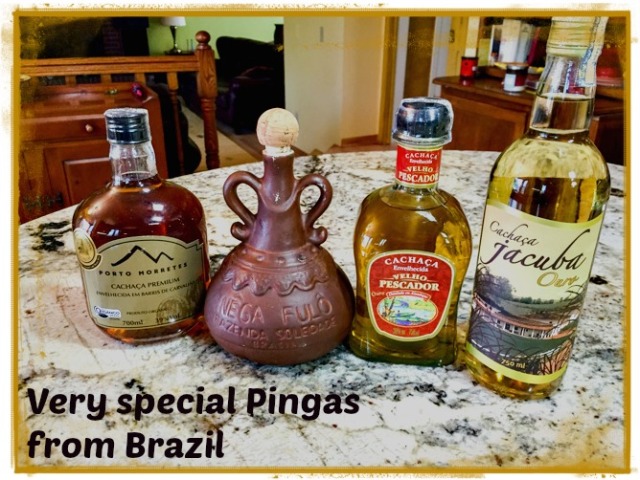This is a guest post by my best friend, husband, and eminently satisfactory co-worker!
Their heyday passed a few decades ago, but if you had the good fortune to visit one of Trader Vic Bergeron’s restaurants, then you probably enjoyed a memorable meal of Polynesian appetizers, drinks and exotic Asian dishes. Delicious beef “cho cho” or crab Rangoon or cheese bings or crispy prawns… YUM, YUM! Or, perhaps you drank a Mai Tai or two in a tiki bar on a tropical beach in Hawaii …. Trader Vic created that classic libation. It all started in 1934, in Oakland, CA, but during the 2nd half of the 20th century Trader Vic’s franchise operated > 30 locations in all the major American cities. They were places to go and celebrate something … special, fun places to relax and laugh with best friends and family. I experienced the restaurants in Chicago, SF, Atlanta, Emeryville and Beverly Hills; just remembering my companions and those occasions puts a smile on my face. Now only two US restaurants remain, the original Trader Vic’s, now on the SF East Bay waterfront (in Emeryville), and a second in Atlanta.
This fond memory recalls my Uncle Bill and Aunt Mildred Sladek, who lived in Riverside, IL. Uncle Bill was a renowned Chicago proctologist, and consequently, a very popular man. I was a pre‐med major at Notre Dame, 80 miles away in S. Bend, IN. I spent many excellent weekends with my favorite aunt and uncle, who were guiding me toward a medical career. When I arrived on the South Shore train on Friday night we were off to one of Chicago’s fine restaurants. Uncle Bill was so well-respected that when he and Mildred a entered a Loop restaurant the Maitre d’ and wait-staff began to bow and curtsey as if Henry VIII and Anne Boleyn had just walked in. Such was the case at Trader Vic’s in the Palmer House in Chicago. It was where I had my first oyster on the half‐shell, and the site of fine meals with the Sladek family (my cousins Bill Jr., Bob and Barbara), including one dinner preceding the Chicago performance of “Hair” in 1972. We loved all the tropical drinks, but especially the Suffering Bastard, that Trader Vic also concocted.
The recipe was a secret, but Uncle Bill managed to get it from the Maitre d’, and passed it to me in a handwritten note that I saved in a lockbox until now. When you search for the recipe of a Suffering Bastard, you will find some drinks that originated at the Cairo Hotel, made from bourbon and gin. But that’s not the same thing we drank at Trader Vic’s. If you’re looking for a refreshing drink on a hot summer day, then you’ve found it!
THE SUFFERING BASTARD
(from Trader Vic’s)
1 measure white rum
2 measures dark rum (Light Burns or Mount Gay Barbados rum)
1 measure Mai Tai mix (Trader Vic’s is best … available at Amazon.com)
1.5 ‐ 2 measures fresh lime juice
for garnish:
fresh pineapple
Maraschino cherries,
cucumber
fresh mint
Give the components a quick shake, pour over cracked ice, and garnish. Be forewarned, it packs a (delightful) punch!
ENJOY!
to print the recipe, click here
Comments from Sally: This was one of the first drinks Phil made for us when we started dating. Sweet memories! Well, let me point out it is actually not a sweet drink at all. We love tart flavors, so it’s perfect for us. If you prefer a sweeter concoction, consider adding a half ounce of simple syrup or agave nectar. It’s not authentic, but we won’t hold grudges.
I hope you enjoyed one more guest post by my beloved! I actually feel very lucky he did not go to medical school, or we probably would have never met…
ONE YEAR AGO: Aloha!
TWO YEARS AGO: Fab Choc Chip Cookies
THREE YEARS AGO: Pumpkin-Chipotle and Kale Pizza
FOUR YEARS AGO: Enchiladas Suizas a la Marcela Valladolid
FIVE YEARS AGO: The Little Apple
SIX YEARS AGO: Majestic Sedona
SEVEN YEARS AGO: Watermelon-induced Daze

















































